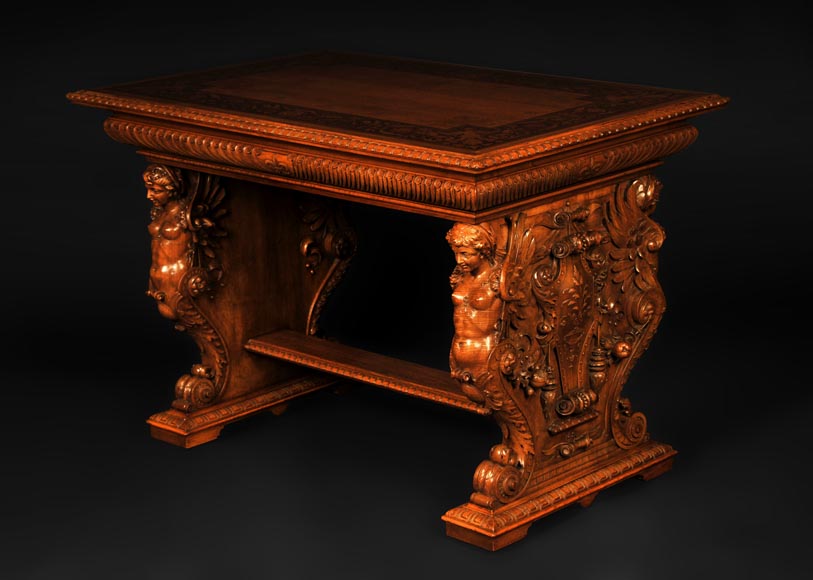Sculpted with virtuosity in the Neo-Renaissance style, this exceptional table shows a great mastery of composition and ornamental vocabulary, demonstrating Henri-Auguste Fourdinois’s knowledge of the works from the past, which he knows how to renew into creations of a dazzling stylistic syncretism and an extraordinary quality of execution.

Description
Four chimeras support a shelf with their wings, which belt is delicately carved with gadroons and a fleur-de-lis in the center. Their slender bodies, their fine facial features and the elegance of their wings remind us of the extraordinary sphinxes of the Fourdinois cabinet presented at the World’s Fair of 1867 , now preserved at the Museum of Decorative Arts in Paris. Dressed in elegant pearl tiaras, their flowing hair is treated differently, creating a stylistic harmony that avoids the repetition of a motif and allows Fourdinois to put into practice all his genius as a sculptor.
On the sides of the table, a rich Renaissance style decoration reinforces the exceptional character of this piece of furniture: cut leathers, festoons, feather, fruits and leaves are here the work of a master whose skilful hands shape every detail, for the service of an exceptional ornamentation.

Material : Sculpted walnut
Localisation : France, circa 1870-1880
Dimensions : H : 28” ¾ , W : 40” ½, P : 25” ⅝

Henri Fourdinois, Cabinet presented at the 1867 World’s Fair, today conserved in the Musée des Arts Décoratifs of Paris
The Renaissance style
All the ornamentation contributes to highlight, in a brilliant illustration, a decorative vocabulary inspired by the greatest masters of the Renaissance. Indeed, starting from the years 1835-1840, some ornemanists, like Chenavard, favor the taste for the Renaissance style in the decorative arts. The restoration of the Royal Château de Blois throughout the Second Empire nourished this enthusiasm for a new fashion allowing to somewhat renew the decorative vocabulary.






